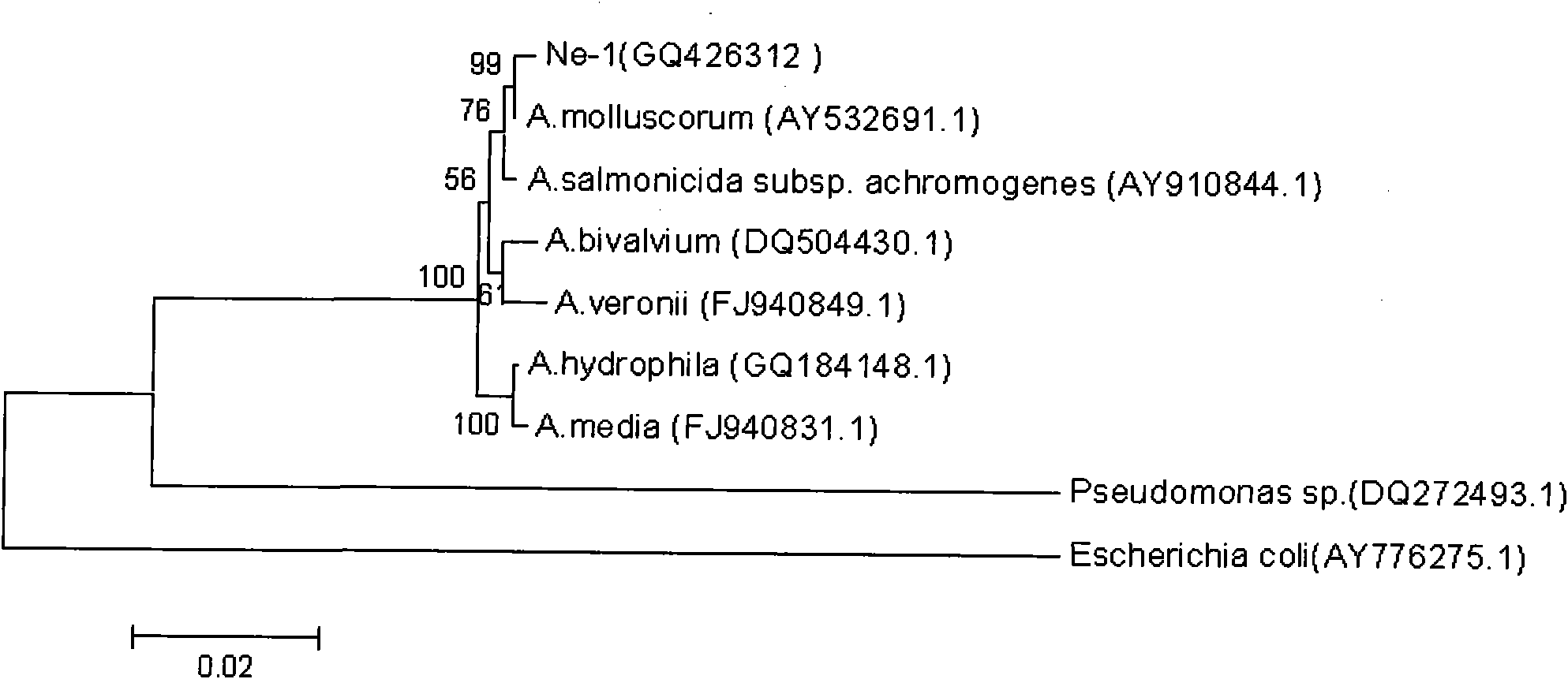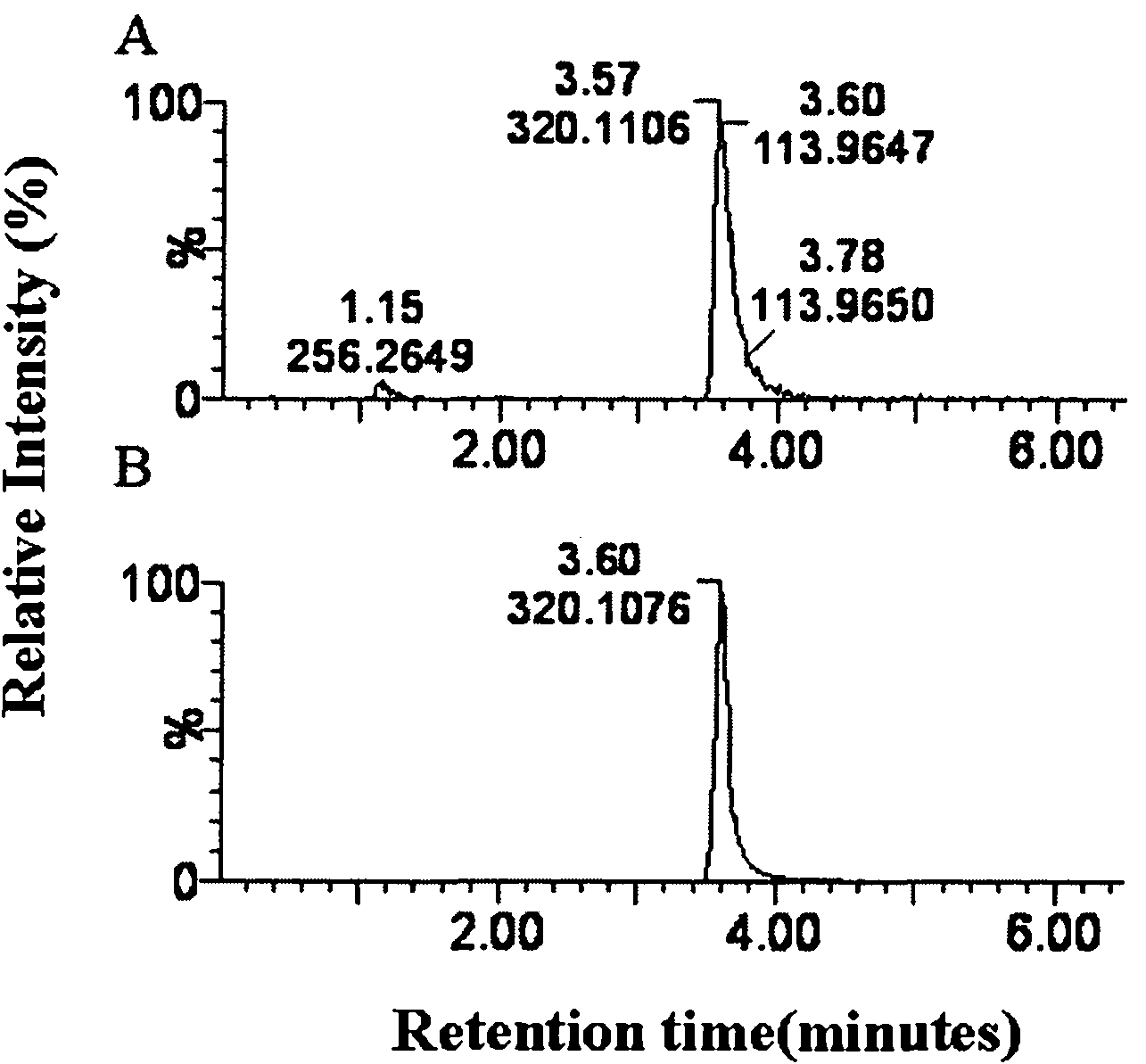Method for separating Aeromonas molluscorum producing tetrodotoxin from Takifugu fasciatus tissue and fermentation culture method of Aeromonas molluscorum as well as detection method of produced tetrodotoxin
A technology of fugu obscura, tetrodotoxin, applied in the field of monas molluscor
- Summary
- Abstract
- Description
- Claims
- Application Information
AI Technical Summary
Problems solved by technology
Method used
Image
Examples
Embodiment 1
[0069] The method for isolating Aeromonas Aeromonas molluscorum from the ovary of wild pufferfish Takifugu fasciatus can be operated according to the following steps:
[0070] (1) Select live wild pufferfish Takifugu fasciatus, collected by the inventor from Jiangsu Province, China.
[0071] (2) Scrub and disinfect the fish body surface with 95% alcohol, dissect the fish body with sterile scalpel, scissors and tweezers, and take out the ovary.
[0072] (3) Homogenize the ovary with a sterile homogenizer, and make a dilution with 0.9% normal saline at a ratio of 1:10,
[0073] (4) Take 1ml of the diluted solution and spread it on the TCBS solid medium, and incubate at 23°C for 48h.
[0074] (5) pick the characteristic bacterium colony on the medium, streak on another TCBS solid medium,
[0075] (6) Cultivate at 23°C for 24 hours, and then re-stretch and culture the isolated single colony,
[0076] (7) Repeat the streak isolation culture until a sufficiently pure single colon...
Embodiment 2
[0081] The method for identifying Aeromonas molluscorum bacteria using the full-length sequence of 16S rDNA can be operated in accordance with the following steps:
[0082] (1) Inoculate the isolated bacterial strains in liquid medium ORI.
[0083] (2) At 23°C, 225 rpm, culture for 5-6 days.
[0084] (3) Extract the genomic DNA of the strain.
[0085] (4) PCR amplification of the full-length sequence of 16S rDNA, the upstream primer used: 5'-AGA GTT TGA TCCTGG CTC AG-3', the downstream primer: 5'-GGT TAC CTT GTT ACG ACT T-3'.
[0086] (3) 25μl PCR reaction system, including:
[0087] 2.5 μl 10xPCR reaction buffer,
[0088] 1 μl of 2.5 mM dNTPs,
[0089] 1 U Taq enzyme,
[0090] Each 1μl 6.25mM upstream and downstream primers,
[0091] Bacterial genomic DNA 50ng.
[0092] (4) PCR reaction procedure:
[0093] After pre-denaturation at 95°C for 5 minutes.
[0094] Perform 30 cycles: 95°C for 1 min, 50°C for 1 min, and 72°C for 2 min.
[0095] Finally, extend at 72°C for...
Embodiment 3
[0106] A competitive enzyme-linked immunosorbent assay method for the identification of tetrodotoxin of bacterial origin from Aeromonas molluscorum, including the following steps:
[0107] (1) within the range of 0-250ng / ml, fix the tetrodotoxin standard samples of tetrodotoxin origin of 0, 50, 100, 150, 200, 250ng / ml on the microwell plate;
[0108] (2) Add tetrodotoxin monoclonal antibody MAb-TTX purchased from a commercial company (Beijing Zhongwei Food Hygiene Technology Co., Ltd.) into the microwell plate, and detect the absorbance value with a spectrophotometer, expressed in Ao;
[0109](3) Establish a standard curve with tetrodotoxin concentration in the range of 0-250ng / ml.
[0110] (4) fermenting and culturing tetrodotoxin and tetrodotoxin monoclonal antibody MAb-TTX are added into the microwell plate together, and the absorbance value is detected by a spectrophotometer, expressed in Ai;
[0111] (5) Ai / Ao ratio, the concentration of tetrodotoxin from Aeromonas mollu...
PUM
 Login to View More
Login to View More Abstract
Description
Claims
Application Information
 Login to View More
Login to View More - R&D
- Intellectual Property
- Life Sciences
- Materials
- Tech Scout
- Unparalleled Data Quality
- Higher Quality Content
- 60% Fewer Hallucinations
Browse by: Latest US Patents, China's latest patents, Technical Efficacy Thesaurus, Application Domain, Technology Topic, Popular Technical Reports.
© 2025 PatSnap. All rights reserved.Legal|Privacy policy|Modern Slavery Act Transparency Statement|Sitemap|About US| Contact US: help@patsnap.com



